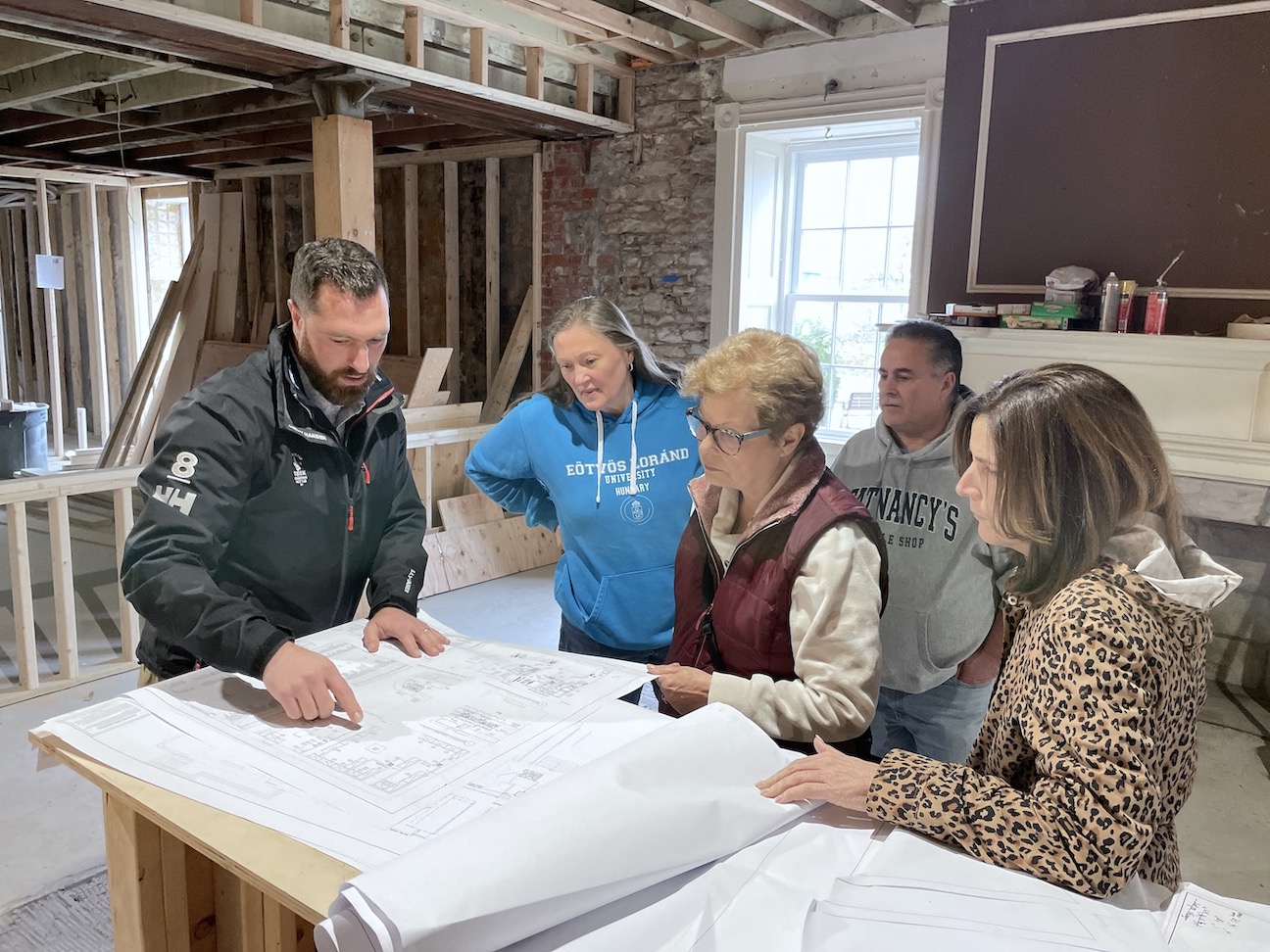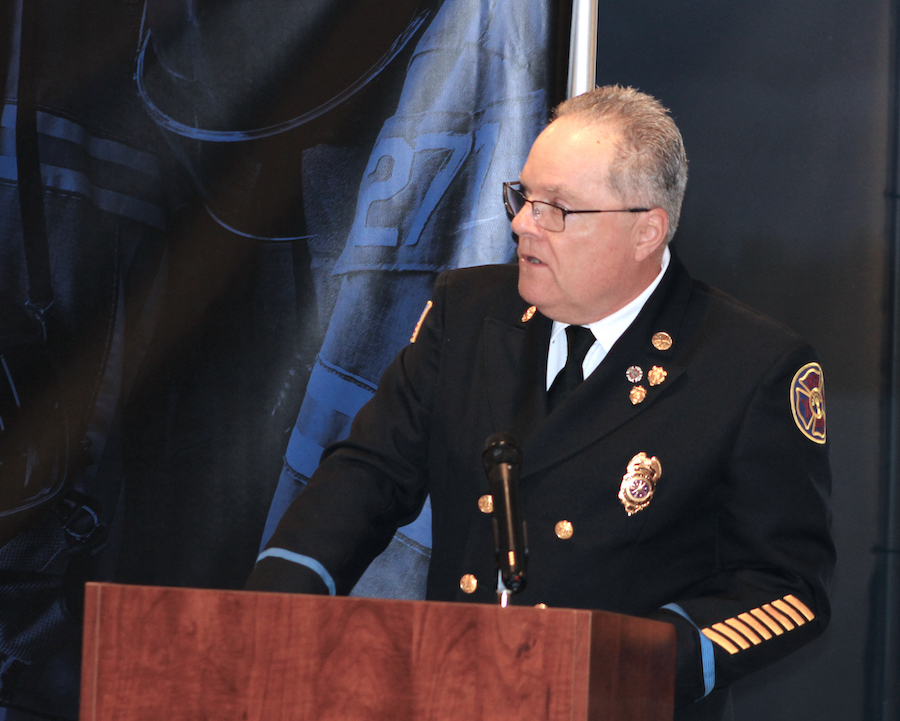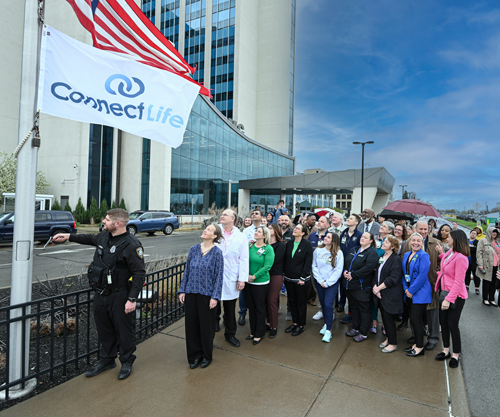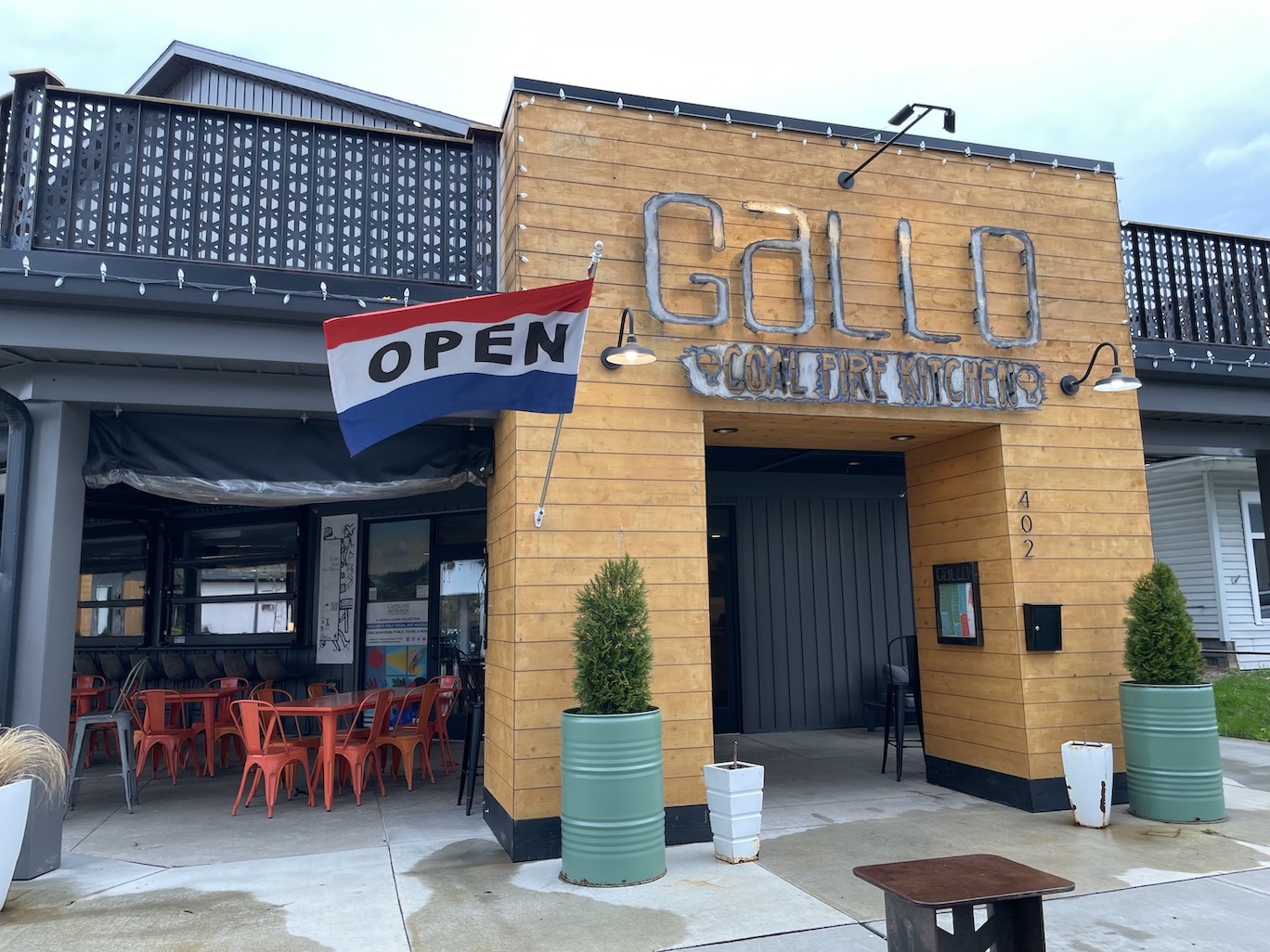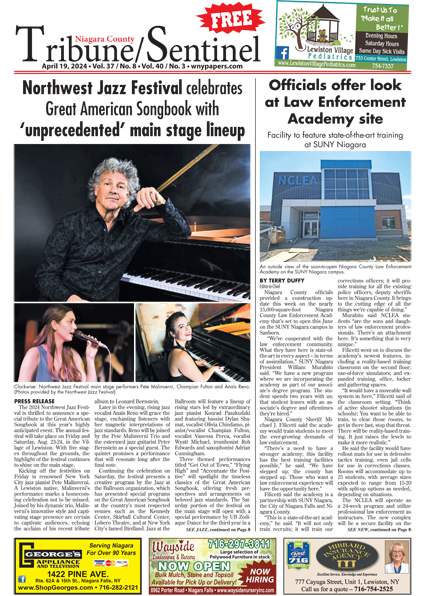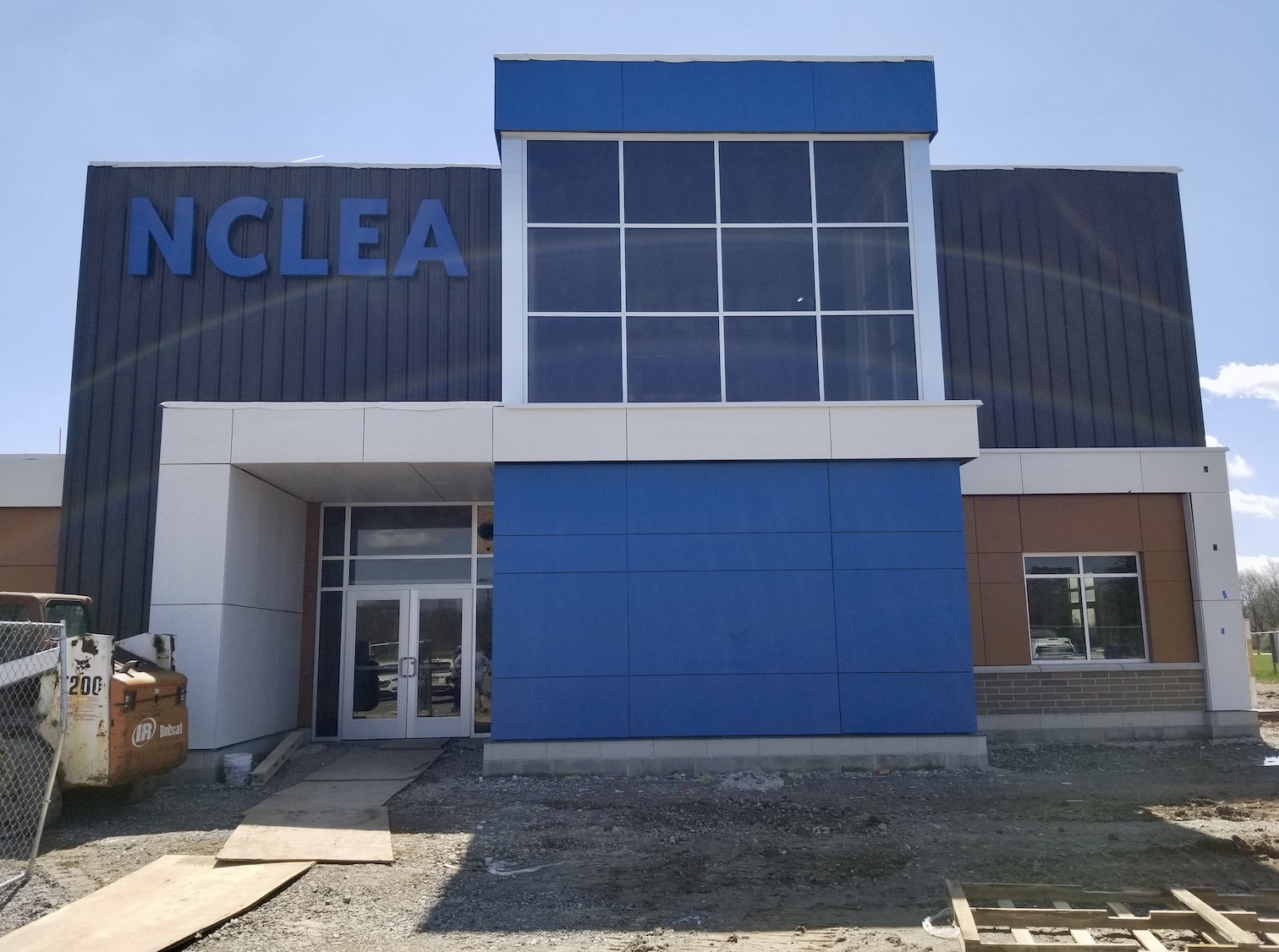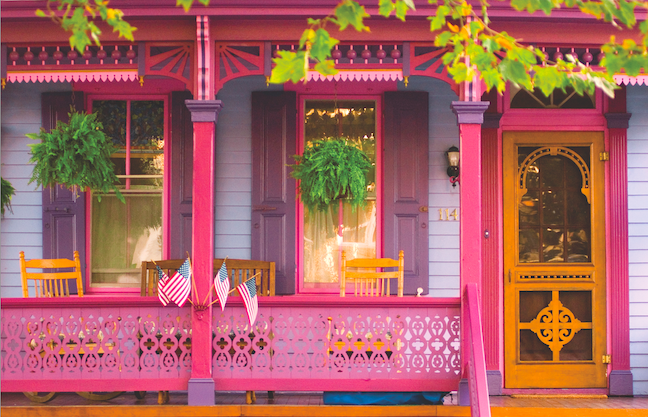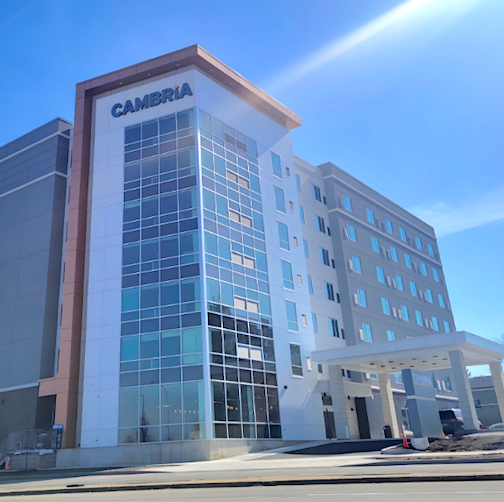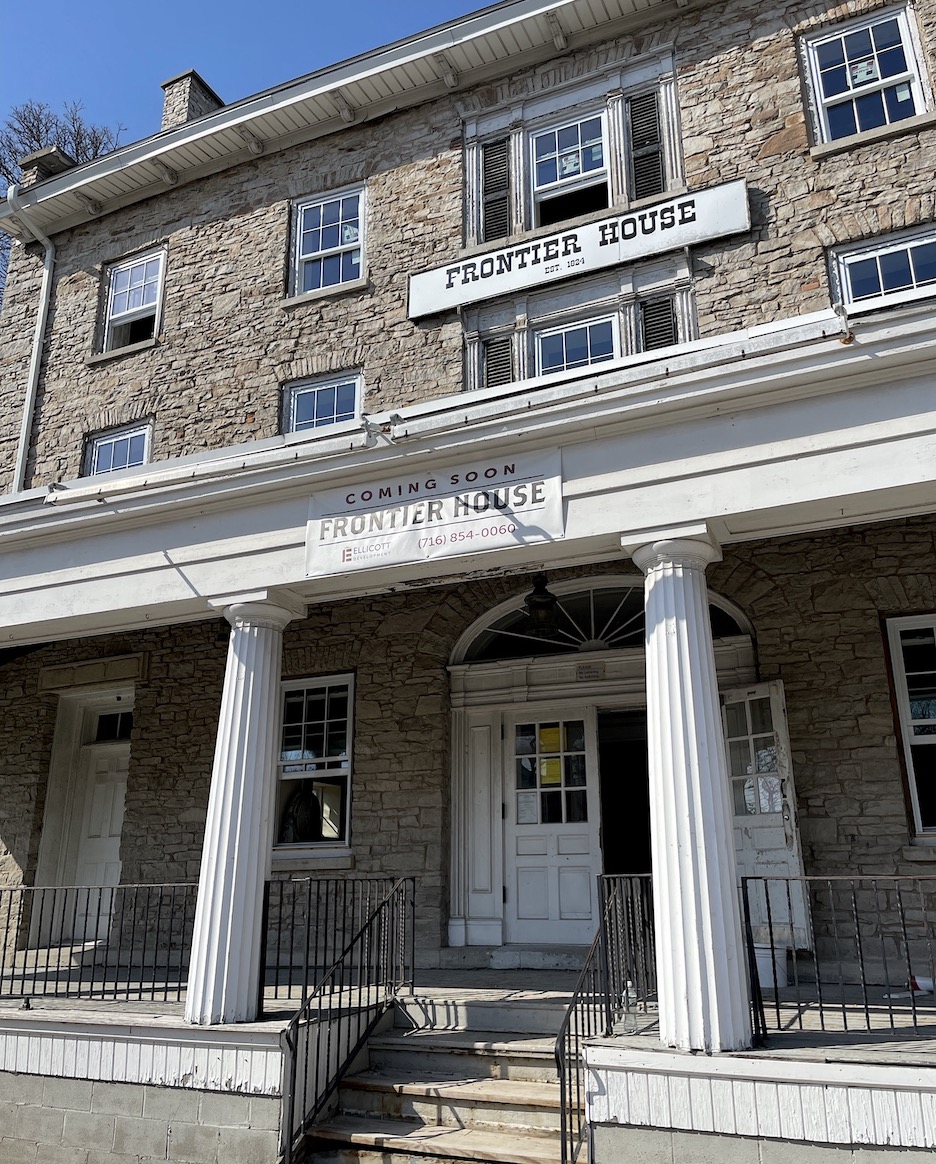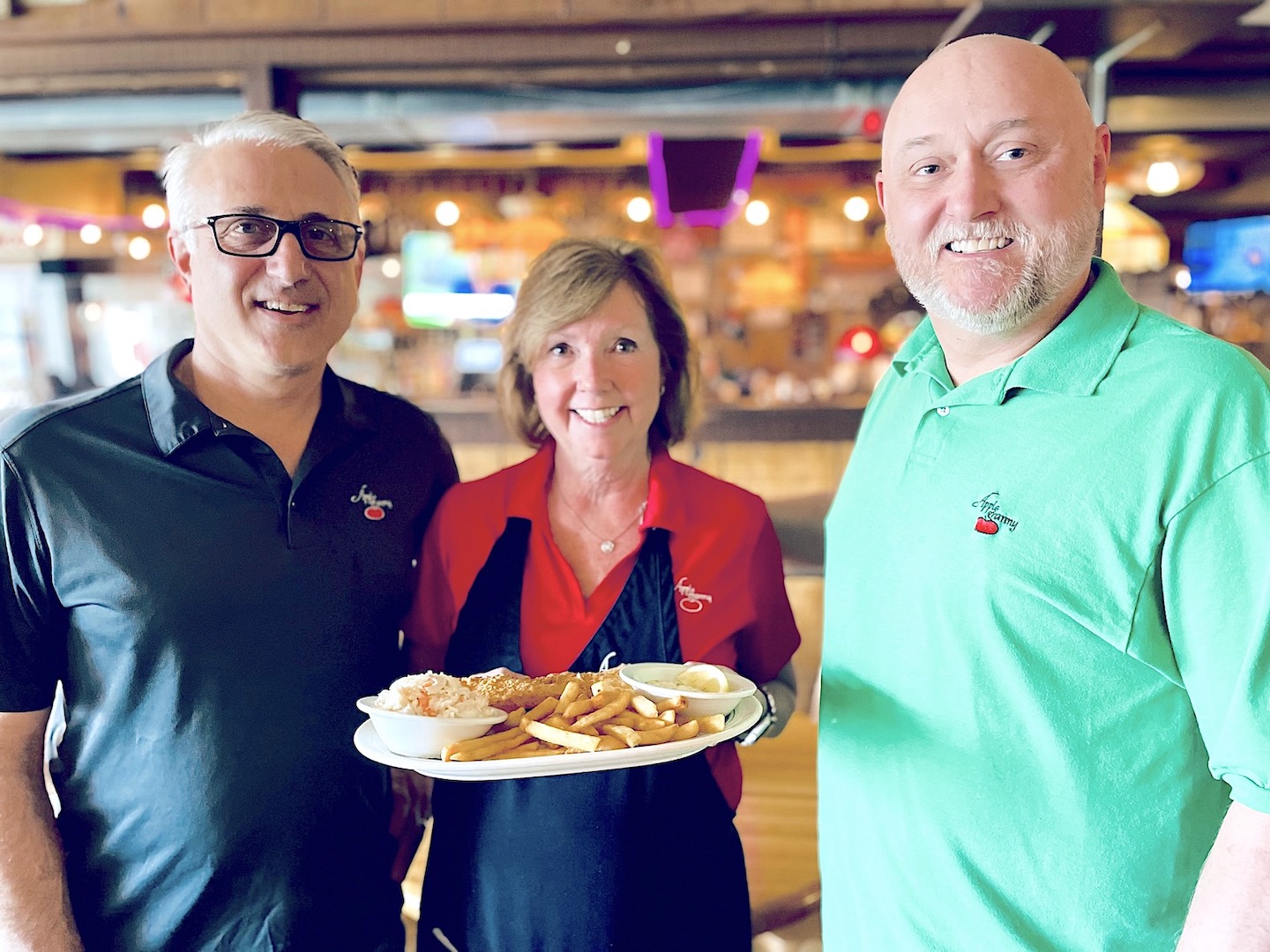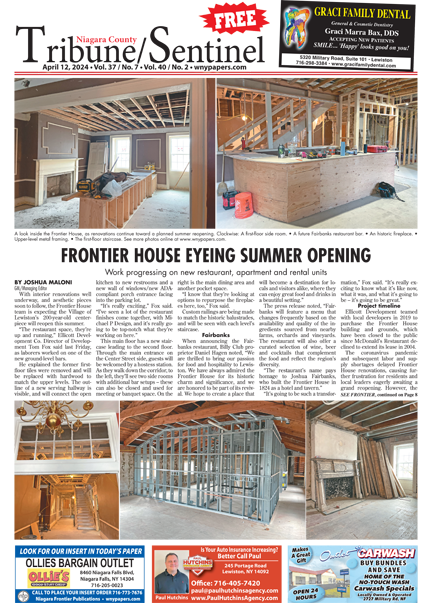
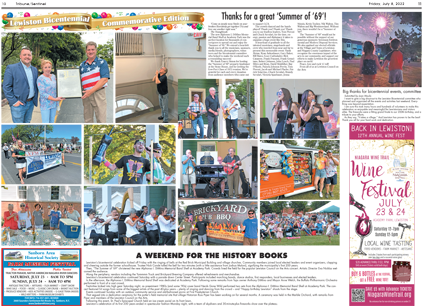

Over the next six months, the Historical Association of Lewiston and Lewiston Bicentennial Committee will team with Niagara Frontier Publications to highlight news, events and features commemorating Lewiston’s first 200 years. These exclusive pieces will count down to a grand celebration, scheduled to take place July 1-4, 2022.
••••••••
In case you have not yet heard, the four days from July 1-4, 2022, we will host one of Lewiston’s grandest parties in many years, our bicentennial celebration. Mark your calendar now – do not miss it!
As we prepare for a fun-filled weekend, the Bicentennial Committee, which has been hard at work for two years, thought you all may enjoy hearing about buildings in our community that were existing when the village was formed in 1822. Today, we begin with the first presentation. Thirteen more will follow as we build toward this party.
Before diving in, we want to acknowledge the efforts of Austin Heinz, who accepted a position with the Lewiston Museum as intern in the summer of 2020. Under the direction and supervision of Museum Curator Tom Collister, Austin researched and developed the key information for these buildings, their owners and historical details for these publications. The board and members of the Historical Association of Lewiston, and the Lewiston Bicentennial Committee are grateful for his talented efforts.
In the middle of the village, there sits a small house that hasn’t gone through any major changes in two centuries. In 1816, the building known as the “Little Yellow House” was constructed on 476 Center St., where it still stands today. Benjamin Barton and Peter Porter, two notable names in Lewiston’s rich history, sold the lot to David Shockney for an initial payment of $250 with the stipulation that he create a “livable” home in no more than two years. He satisfied their definition of livable – but only barely. This is how the “little” in “Little Yellow House” came to be.
It would later be owned by Robert Fleming, the town’s first judge. The house gained its distinct yellow color sometime around 1863, when an old steamship line with yellow hulls came into Lewiston Landing. Many residents bought their unused yellow paint for cheap, but it would become the iconic color of this historic home. This tiny building was a home to many in Lewiston and, in the 1900s, it was even occupied by a family of 10.
When the “Little Yellow House” became a place of business, one of its most well-known inhabitants was John Simon, who made it into his law office for many years. The town and village purchased the house in 1999 to save it from destruction. They turned it into the Lewiston Visitor Center, but currently it is owned by the Village of Lewiston and is rented out to private businesses.
During renovations the house underwent in 2001, two men discovered a metal box hidden inside the foundation of a wall. This box contained a Colt .45, a pistol that was famous for its use in both World Wars, with an engraving that marked its use as early as 1911. The gun is old, but it is only half as old as this historic house of Lewiston.
Here is an early view of the tiny house on Center Street, originally built in 1816, shortly after the War of 1812.
With each of these articles, we will also tell you about one of the many features being developed for the celebration. Let’s start at, well, the beginning: Friday, July 1, 2022. To kick off the celebration, the bells at our old Red Brick School will ring out at 6 p.m. Shortly thereafter, we are asking all of the village churches to join in the ringing of the community bells!
One of the well-established annual events by the Lewiston Council on the Arts is the “Summer of 69” concert. Normally held at Hennepin Park, next year it will be held in the newly renovated Alphonso DiMino Memorial Bandshell in Academy Park. This event always brings home former residents and their families, so we are giving them all a reason to be here for the entire celebration.
To learn more about the bicentennial, see who is involved and to learn about sponsorship opportunities, please visit www.Lewiston200.org.
Be certain to mark your new 2022 calendars now to be here July 1-4, 2022. After all, where else would you rather be?

••••••••
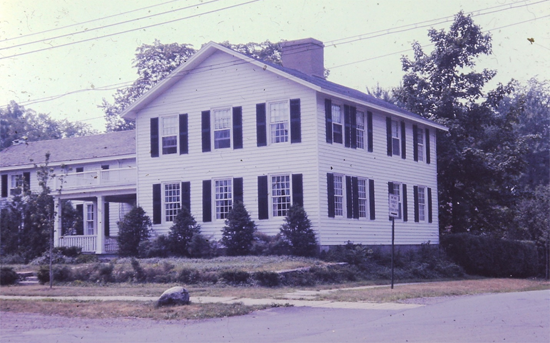
This is the second of 14 stories about homes in Lewiston, which will be at least 200 years old during our celebration of the bicentennial July 1-4, 2022.
Whether you are a lifelong resident of this community, just unloading your moving van, or anywhere in between, please mark your calendar for this fun-filled weekend coming up this summer.
155 S. Fifth St.: ‘Smith Home’
Situated in the heart of the village at the southwest corner of South Fifth and Plain streets, the house consists of two wings. The first wing, or north section (along Plain), is a large rectangular wing with a center chimney built in 1817 by David Smith. He was the minister for the first Religious Society in Lewiston, first minister of the Presbyterian Church, and also a founder for the first Episcopal congregation.
Outside of religious affairs, he was a prime mover in getting the Lewiston Academy built, and was its first principle. The original section of the house became known as the Presbyterian manse and also as the “Preachers House.” It is said the date, 1817, is carved in the stone foundation of the north wall.
Since Smith is one of the founding families and was on several committees over the years, it only makes sense that most of Lewiston’s founding fathers frequented his home. Names like Barton, Fairbanks, Hopkins, Robinson, Sage, Porter, Tryon and Cooke were all close friends of Dr. Smith and attended meetings at his home. It is said that the original kitchen fireplace in the basement has been left intact from 1817.
The second section, or south wing (along Fifth Street), was originally an extensive carriage house. There is some conjecture as to when it was built: the Village Historic Preservation Committee record says circa 1821 in its report, while the sesquicentennial committee puts it as 1855 when Oliver Perry Scovell bought the home from Leonard Sheppard’s estate (he was father of Mr. Scovell’s first wife, who died young). It was later converted into living quarters, but that date is uncertain.
From Dr. David Smith, the original owner, the home passed on to Leonard Sheppard. He was a merchandizer and one of the founders of the Lewiston Railroad Company. Next came Oliver Perry Scovell and his second wife. Oliver was the nephew of Seymour Scovell, who built Oak Hill on Tuscarora Street (now within Artpark).
Oliver Perry Scovell was an ardent churchmen, abolitionist and prohibitionist. He worked for the New York Central Railroad as a manager and helped build the Lewiston to Oswego Railroad. He also became a New York state legislator and held several public offices in Lewiston in his later years. His second wife, Elizabeth Jewett, came from a famous family in Vermont. She lived in this home until her death at 103 years old. Their son, J Boardman Scovell, took over the residence. He was a lawyer and historian that was personally acquainted with every president from Grover Cleveland to Franklin Roosevelt, and was close friends with Woodrow Wilson. He was a leading authority on Niagara Frontier history and author of the book “History of Niagara Portage.”
This Scovell also legally represented William Love, the man infamous for his “Model City” and Love Canal. Scovell and his wife would sell the house in 1942, and it would pass several hands, not staying in one family’s possession for long. The house remains mostly unchanged from the time of its construction, but the new aluminum sidings and a garage mark its transition to the modern period. This historic home served as the meeting place and dwelling of some of the most important names in Lewiston’s history and should be remembered as such.
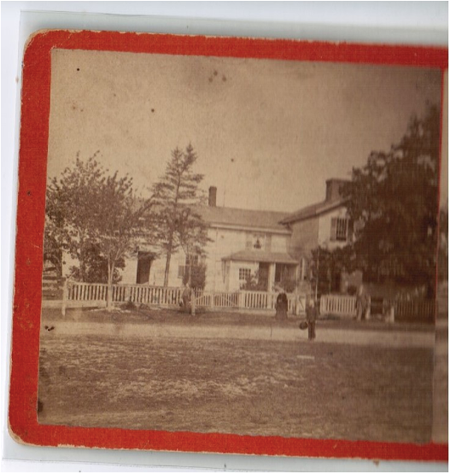
This undated photo shows the “Preacher’s House” in an era long past.
••••••••
Celebrating 200 Years
On Saturday, July 2, there will be a variety of activities offered by many community groups and individuals. There will be an early-morning yoga class at Academy Park. At 11 a.m., there will be a parade, so we encourage community groups to plan, create and enter a historically themed float. The balance of the day will have other events, which I will offer in the next article.
There are many opportunities for businesses and private citizens to participate and sponsor one or more of the weekend’s events. To learn more about the bicentennial, see who is involved and to learn about sponsorship opportunities, please visit www.Lewiston200.org.
Be certain to mark your new 2022 calendars now to be here July 1-4. After all, where else would you rather be?
Thanks to Ken Slaugenhoupt, Tom Collister and Austin Heinz for the article.
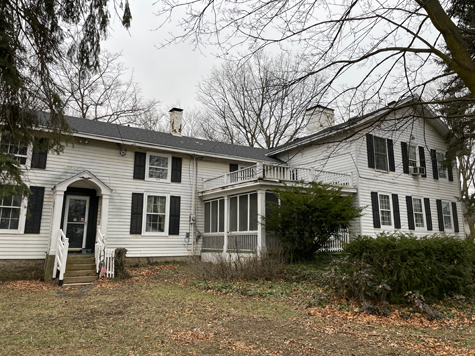
… And now

••••••••
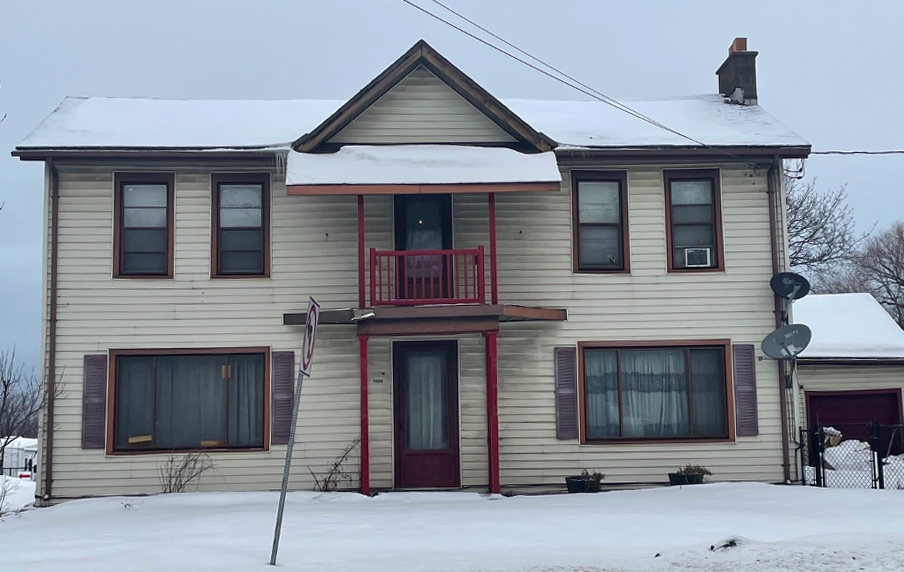
1443 Ridge Road: The Sage Tavern
Many Lewiston residents enjoy stopping by the Hill-vue Restaurant on Ridge Road just east of Model City Road for a tasty meal. Next time you go, take notice of the building immediately east of the parking lot, because that is the topic of today’s article.
In contention for the oldest house in Lewiston is the Sage Tavern. This building was constructed by Sparrow Sage, who bought large acreages around Lewiston. He constructed his log cabin and tavern along the Niagara Road, or the “Great Ridge” as it was called. When the British came in late 1813, local lore tells us they spared the tavern despite direct orders to burn everything because they helped themselves to drinks in it. If they didn’t burn it down, then this is Lewiston’ oldest or second-oldest historic home.
During the British occupation of the area, Sage’s wife was kidnapped and he had to rescue her. As the kidnapper was taking Mrs. Sage and another woman to Fort Niagara, the other woman escaped. She ran to Sparrow and told him what happened. He had been cutting timber, so he grabbed his axe and chased them down, killing the culprit and rescuing his wife. The musket that the Native American wrongdoer was carrying is currently owned by the descendants of Sage that live in Buffalo.
Another interesting story occurred when Sparrow Sage briefly converted to Millerism. This branch of Christianity believed the Second Coming of Christ was coming in April 1843, so Sage didn’t plant his crops that year. When this didn’t occur, he quickly planted more crops and was rewarded with a bountiful harvest despite the late seed sowing. His neighbor, Rufus Spalding, who had planted more crops to share with them, was exasperated when he saw this, and both neighbors wondered if there was something more to religion.
Other than this strange circumstance, Sage was a respected member of the community and served as town supervisor along with other various positions. The house held the first town meeting when the township was created in 1818. Passed resolutions included how much each person would be paid for each “bear scalp” they brought to town. Also, $200 was to be raised for roads, and $75 for poor money (charity).
Like other historic homes in the area, its old age is easily discernable inside from the hand-hewn oak timbers. Additionally, those beams are held together by wooden dowels, which make an interesting feature of the framework. Also, the floors consist of 10-14-inch-wide oak floors that are common to homes built in that early period.
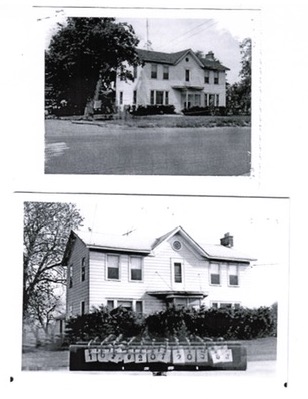

Pictured is the Sage Tavern then … and today.
••••••••
On Saturday, July 2, there will be a very special event you will not want to miss. Thanks to the generosity of one of Lewiston’s most consistent benefactors, Mr. Anthony DiMino, the new Academy Park bandshell, dedicated to his father, Alphonso, will host the Buffalo Philharmonic Orchestra for a two-hour concert. This promises to be one of the highlights of the weekend, so plan on attending. Food and refreshments will be available at Academy Park all weekend. Two hundred years never looked so promising!
There are many opportunities for businesses and private citizens to participate and sponsor one or more of the weekend’s events. To learn more about the bicentennial, see who is involved or to learn about sponsorship opportunities, visit www.Lewiston200.org.
July 1-4, 2022. Lewiston, New York. Be there!
Thanks to Ken Slaugenhoupt, Tom Collister and Austin Heinz for the article.

••••••••
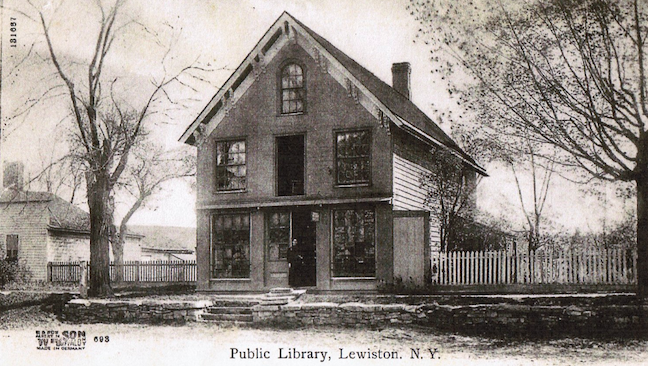
535 Center St., DiCamillo Bakery
World-renowned DiCamillo Bakery has long been doing business at 535 Center St., Lewiston, a building with a long presence and history. The building was built by William Hotchkiss and his brother, Calvin, around 1817. It served as a general store for early settlers, supplying them with goods necessary for life on the Niagara Frontier. Items included blades, fabrics of many varieties, fashion items like buttons or ribbons, and alcohol.
Later, it became Lewiston’s first library, until 1962, and from then on it would be home to various small businesses. It contains an architectural element that can be seen in several buildings throughout Lewiston, which are large openings on the second floor of old buildings. These are sometimes called coffin doors, and their purpose was to gain easy access to the elevated floors. This allowed them to pull store goods up to the second floor for easier storage.
Oftentimes, a metal pole was attached right above the coffin door so that they could pull them up easier. The coffin door and pole still adorn DiCamillo Bakery, and it even has the original front door of the building. So, next time you enter the bakery, you can note the historical door that you enter, as well as the historical door that might never be used again.
Today, 535 Center is well known as Lewiston’s DiCamillo Bakery.
Bicentennial Weekend
On Saturday, July 2, in addition to the Buffalo Philharmonic Concert, the weekly Artisan Farmers Market will be held. There will be a large group yoga session at Academy Park. Both museums (Red Brick and Lewiston Museum at Plain and Niagara streets) will be open all day, and there will be historic walking tours of the village.
In addition, a celebratory parade will kick off at 11 a.m. All community organizations are encouraged to create an historically themed float and dress up in style!
Please consider becoming a sponsor of this wild weekend party. There are sponsorships at many levels for individuals, families and businesses. We need your help to make this a huge success.
To learn more about the bicentennial, see who is involved and to learn about sponsorship opportunities, please visit www.Lewiston200.org.
July 1-4, 2022. Lewiston, New York. Be there!
Thanks to Ken Slaugenhoupt, Tom Collister and Austin Heinz for the article.

••••••••
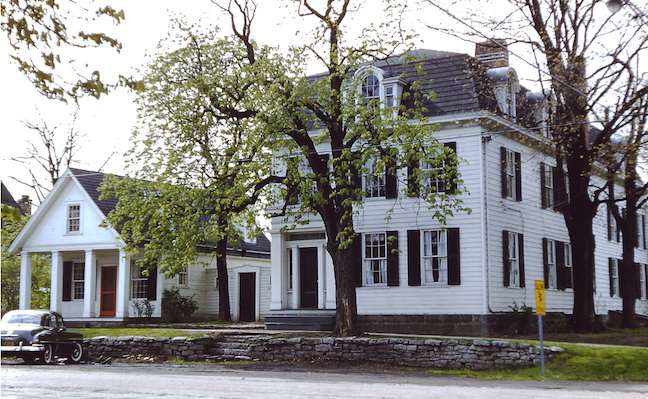
505 Center St. & 515 Center St.: Long and Short House
This is the fifth in a brief series of articles providing some insight into the homes in our town and village, which were already erected when the Village of Lewiston was incorporated in 1822. This one is a natural follow up to last week’s discussion on a closely related construction, 535 Center, now DiCamillo’s Bakery. That was once Calvin Hotchkiss’ store.
The Long House and the Short House of Lewiston sit next to each other on Center Street, 505 and 515 respectively. These two buildings were built by William Hotchkiss and his brother, Calvin, sometime between 1815 and 1817. They were able to build such a big house because they took advantage of a government program to aid those hurt by the War of 1812 called the “Relief Act for the Sufferers on the Niagara Frontier.”
The Long House, which William used for his home, was 128 feet long, counting the carriage house; and the short house was a smaller structure he used for his law practice. Hotchkiss would become one of the town’s first lawyers.
The Hotchkiss family would live in the Long House for over a hundred years. The various architectural themes contained within the buildings are Georgian, Greek Revival, Federal and Italianate. Of particular note are the mansard roof and the Palladian windows, but the age of the building is really seen in the hand-hewn beams that still show cut marks from axes and the wide plank flooring of pine and chestnut.
Another notable feature is the indoor bathroom system found within the Long House. This 19th century contraption used a unique pulley system to carry the “night soil” to the yard where it could be sprinkled with crushed limestone to get rid of unpleasant matter and odors.
For a while, the Long House was home to the Lewiston Library, but both houses have since become places of private business. Currently, the Long House is home to Howard Hanna Realty and the Short House to Alternative Chiropractic.
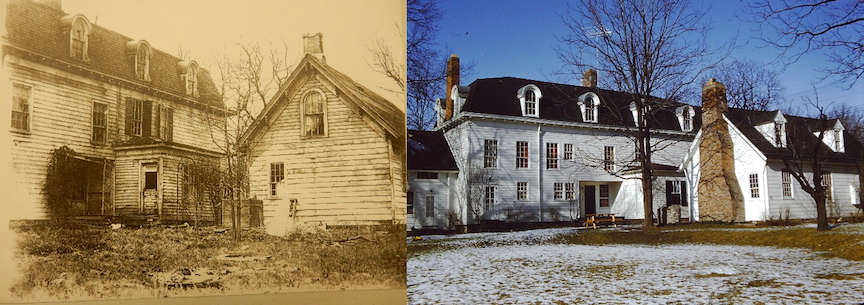
Two similar views from the rear garden area, on the left in a state of disrepair, on the right a current image.
••••••••
Bicentennial Weekend
The Bicentennial Committee has been hard at work preparing for a grand celebration, and we encourage all current and previous Lewiston residents to plan on spending the entire weekend with us in celebration.
On April 30, we will hold a Chiavetta’s chicken barbecue sale at Lewiston Town Hall. Tickets will soon be for sale. Details will be available soon for getting in on this delicious meal and supporting our efforts.
Please consider becoming a sponsor for the celebration. There are sponsorships at many levels for individuals, families and businesses. We need your help to make this a huge success.
To learn more about the bicentennial, see who is involved and to learn about sponsorship opportunities, please visit www.Lewiston200.org.
July 1-4, 2022. Lewiston, New York. Be there!
Thanks to Ken Slaugenhoupt, Tom Collister and Austin Heinz for the article.
The buildings today.

••••••••
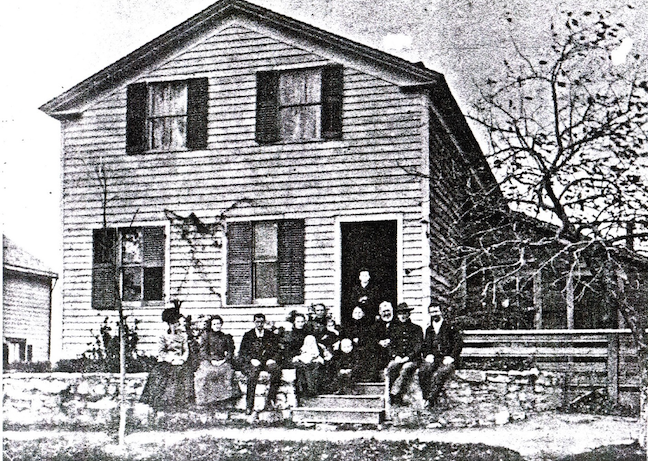
810 Center St.: Griffon House/ Clarkson House
Today we look into another “bicentennial structure,” this one a well-known and appreciated dining establishment on the north side of Center Street, as you enter into the business district. As a lead-up to our upcoming celebration of the 200th anniversary of the Town and Village of Lewiston, everyone should be aware of these longstanding and interesting structures.
The building on 810 Center St. was originally a private home, but since then has housed iconic restaurants in Lewiston – but there is more to this building than good food. Not many years back, it housed the long-popular Clarkson House; and currently the Griffon, home to an eclectic and delicious menu.
The original building was the home of Jacob Townsend, a businessman born in Connecticut. He found Lewiston after taking a frontier exploration for shipping routes that the British wouldn’t likely disrupt. Lewiston was a perfect place to set up a shipping company, because it allowed him to control business on the Great Lakes. With his partner in Oswego and in concert with Porter Barton forwarding company, he was able to control virtually all trade on the Great Lakes until the Erie Canal was built in 1825 and Lewiston’s shipping importance declined.
This would signal the retirement of Jacob Townsend, but his continuing influence in Lewiston is still notable: He held positions as overseer of the poor, supervisor of the town, and helped establish and support the Lewiston Academy. Townsend also owned a farm at the top of the ridge, which encompassed the land currently occupied by the Niagara Falls Country Club.
Townsends would continue to own the house at 810 Center until 1865, when various business owners would take over the building.
The age of the building is exposed through the techniques used to construct it. The frame of the building is mortised and pinned: a very old construction technique, which connected two pieces of wood through joints. This allowed for the construction of the building without many nails. In fact, in the original construction of the house, there were almost no nails; the few that were found were square and handmade. Other than that, the posts and beams are original, all hand-hewn oak and chestnut, which have thousands of minute marks that denote original construction process and its age. Also, the chimney is unlike modern ones, because it has handmade bricks that are arranged in a rambling manner. This historic home has a great history one can admire while enjoying the businesses that occupy it.
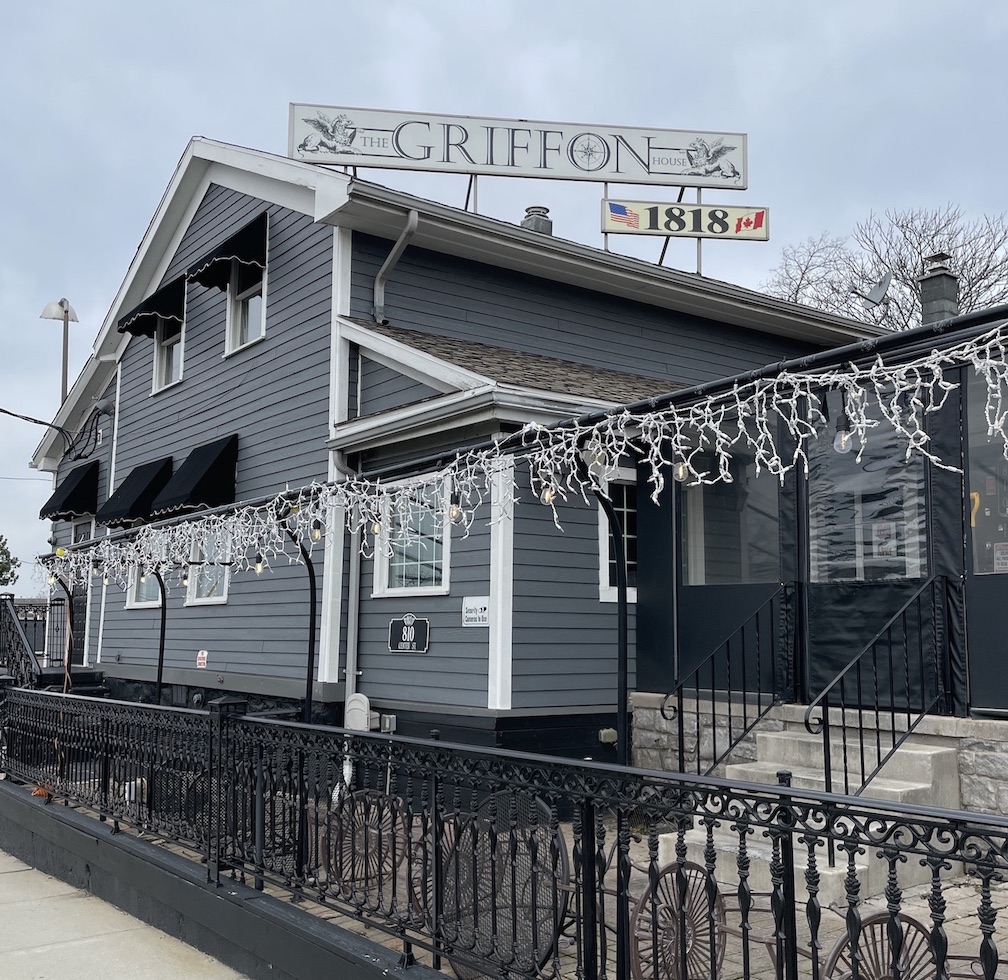
810 Center in 2022.
••••••••
Bicentennial Celebration
We are now only four months from the big weekend celebration!
We encourage all Lewistonians to reach out to the friends and family they know who now live away and encourage them to make immediate plans to be here for the Fourth of July. There will be concerts, games, dedications, historic tours, food, drink and fun all weekend long. And the closing fireworks you will not want to miss.
Fundraisers continue, including a Chiavetta’s chicken barbecue sale at Lewiston Town Hall. Tickets are now available – reach out to a committee member. If you are not sure who they are, you may call Ken Slaugenhoupt at 716-870-0081. Cost is $13 until April 23, and everyone who buys a ticket by then is placed into a drawing for a basket of wines. After then, the cost moves to $15.
Please consider becoming a sponsor for the celebration. There are sponsorships at many levels for individuals, families and businesses. We need your help to make this a huge success.
To learn more about the bicentennial, see who is involved and to learn about sponsorship opportunities, please visit www.Lewiston200.org.
July 1-4, 2022. Lewiston, New York. Be there!
Thanks to Ken Slaugenhoupt, Tom Collister and Austin Heinz for the article.

••••••••
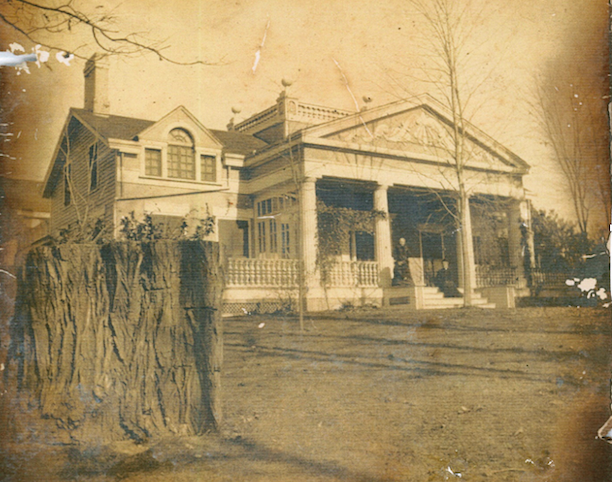
210 Center St.: The Barton House
I want to thank the several people who have gone out of their way to tell me they are enjoying these bicentennial articles. The Historical Association of Lewiston has been focused since 1973 on bringing Lewiston’s unique historical significance to the awareness of our citizens and our visitors from around the world. These articles will run up until our bicentennial celebration on the weekend of July Fourth this year.
Today, we turn our attention to one of our most remarkable properties, owned currently by past HAL President Diane Finkbeiner and her husband, Ed. They continue supporting our efforts even from afar. Thank you, Diane and Ed.
210 Center St. is a house most people refer to as the “Barton House.” Originally built in 1807, it received damage during the Battle of Queenston Heights and was, a short time later, burned by the British in December 1813. Following the War of 1812, the owners returned and rebuilt the house we now see, in 1815, on the original foundation.
When the original building still stood in 1812, it was used as a headquarters for the military and artillery because of its great view over the Niagara River. The original builder and resident was Benjamin Barton, who served during the War of 1812 as quartermaster. His ledger book for the preparation for the Battle of Queenston Heights is on display in the Plain Street Museum.
The house’s construction in 1815 turned it into a 13-room mansion with an incredible view of the Niagara River thanks to a widow’s walk on top of the building. Benjamin Barton, a major patron of Lewiston and a partner in the Porter-Barton Portage Co., had the house built to oversee his trade company.
The architecture of the house is Greek Revival with Federal and Colonial features. A French architect, who made only three staircases in America, designed and constructed the cylindrical stairway with a skylight. There is a prominent pre-Victorian fireplace and a balustrade porch typically found in Colonial architecture. Above the porch is a graceful carving that is sure to catch the eye of any visitor or passerby.
Of particular interest within the building is a tunnel in the kitchen trapdoor that used to lead to the Niagara River. This is believed to have been part of the Underground Railroad, but the tunnel has since been filled in. This is juxtaposed to the north wing of the building, which was originally a slave servant quarters. This makes it one of the only standing buildings in the vicinity with a section dedicated to slaves, because slavery was abolished in New York state in 1817.
Barton, who also constructed the Frontier House and brought stage routes into the village, is one of Lewiston’s best known founding fathers. When our museum opens in June, we have a wonderful surprise for the community, which will focus on the Barton family and all they did in the village and township. Stand by for more news.
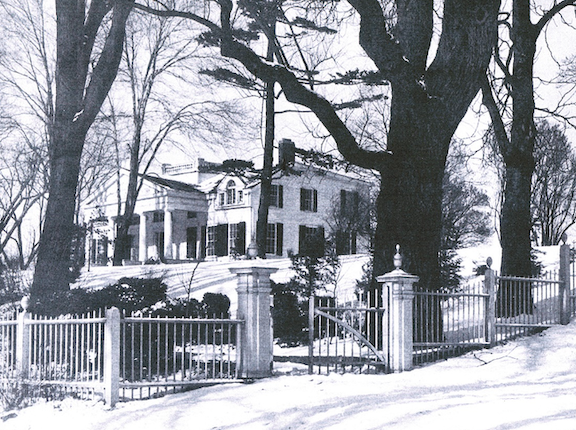
A winter view from Center Street of “Barton House.”
••••••••
Bicentennial Weekend
Visit www.Lewiston200.org to see sponsorships, schedule of events, and contact us for more details anytime.
July 1-4, 2022. Lewiston, New York. Be there!
Thanks to Ken Slaugenhoupt, Tom Collister and Austin Heinz for the article.

••••••••
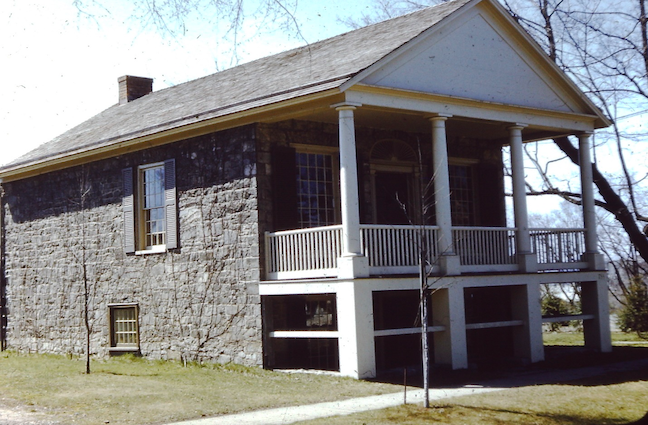
755 Center St.: Stone House Pub
Welcome back to our eighth bicentennial building in the series, the great old building at 755 Center St., today known as the Stone House pub. This is one of Lewiston’s premiere summer venues for fun and frolic. Currently, it is owned and operated by Emery Simon and family.
The Stone House is always hopping in the summertime, and its over-200-year-old history makes it an even more attractive venue. That history starts with Bates Cooke, who built it in 1820 as his law office.
Bates Cooke was one of the first lawyers in Lewiston, but his reach extended far outside the town. He became a New York state comptroller, meaning he examined and certified the expenditures of the state. His success in politics would also lead him to become a congressional representative.
Cook showed his courage and grit locally in an unexpected way when the British came in 1813 to burn down Lewiston. The story goes that, when the Native Americans working for the British were chasing down the fleeing citizens, Bates got out his brother Lothrop’s gun, which had one bullet in it. When he fired and killed a particularly fierce warrior, the remaining attacking warriors were temporarily stunned and everyone was able to increase the gap and make good their escape.
The Tuscarora allies that heard the gunfire were able to join the defense, and the poorly dressed and panicked citizens hurried away. If Bates Cooke hadn’t shown such heroism, many more pioneers of Lewiston may have been lost to history.
Another chapter in the history of this building was when it became the Last Chance Saloon by the early 20th century. It was named this because it was the last place you could get a drink before exiting Lewiston. However, it earned the name “First and Last Chance Saloon” because the sign was different depending on which direction you came from: If you were coming into the town, it said the “First Chance Saloon”; but if you were heading out, it said the “Last Chance Saloon.”
This unique marketing attempt stuck in the minds of the people who enjoyed the building and its services. However, the building lost much of its appeal in the 1920s when it was remodeled to be a private dwelling, and they enclosed the entire building in wood and shingles.
Luckily, Mr. and Mrs. Klaussen, notable Norwegian residents of the community, bought the house in 1950 and restored it. Thanks to them, the beautiful columns in the front contain much of the design and material as the original. The building has gone through many hands: It has been a law office, a school, a private residence, a beauty parlor, an art gallery.
The next time you visit, be certain to appreciate its history and importance to the community of Lewiston.
Bicentennial Weekend
On Sunday, July 3, Academy Park will see a morning yoga session. Also in the morning, there will be a lower landing historical tour in Artpark. At 1 p.m. that day, the Potter’s Field Monument dedication will happen in the Village Cemetery behind the Old Stone Church on Fifth Street. This is a project led by Lewiston’s historian, Russ Piper, and has been a labor of love. Please plan on attending, for certain.
There are many activities planned. To see who is involved and to learn about sponsorship opportunities, please visit www.Lewiston200.org.
July 1-4, 2022. Lewiston, New York. In the immortal words of Marv Levy … well, you know.
Thanks to Ken Slaugenhoupt, Tom Collister and Austin Heinz for the article.

••••••••
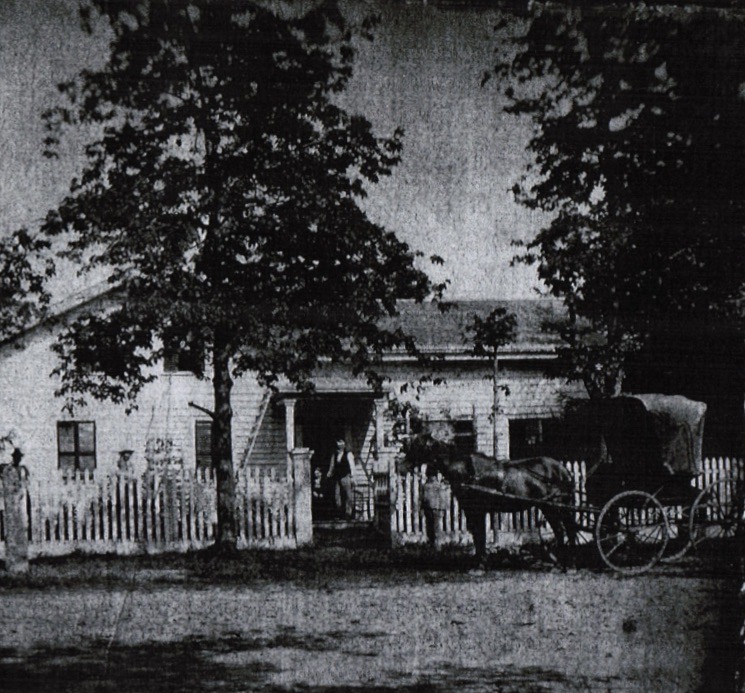
This is an undated but early picture of the Gray House. Arthur Gray was an active abolitionist and member of the local Underground Railroad activity.
•••••
412 Dutton Drive: Gray House
In Lewiston, many homes have a value far beyond their material worth. Some people walk by them, oblivious to the history, but many others are aware of the great history that has been made and once lived within the houses.
However, some houses slide under the radar of even the most observant history buffs. One of these houses is a short distance north of the village, just north of Tryon’s Folly, at 412 Dutton Drive. This is partly because it was moved back from the street it was originally on, for unknown reasons.
While relatively obscure, this was the home of the Lewiston abolitionist Arthur Gray. One of the stories from his abolitionist’s history was when he met an African American freedom seeker looking for asylum in Canada by crossing the Niagara River. However, when Gray found him, the man was in a terrible condition, so he nursed him back to health. As a token of his gratitude, the man gave him his only possession in the world: the walking stick he had been carrying on his journey.
This walking stick is currently displayed in the Lewiston Historical Museum, and is one of many stories that show Lewiston’s importance in the Underground Railroad.
Not much else is known about Arthur besides his ties to the Copeland family. Margret Copeland, whom he would marry, moved to Lewiston with her family in 1820 from Northern Ireland. The Grays and Copelands were early settlers of Lewiston, but many moved out of Lewiston by the turn of the 20th century. This early history would be easily forgotten if the history of Lewiston didn’t have so many dedicated enthusiasts and archivists.
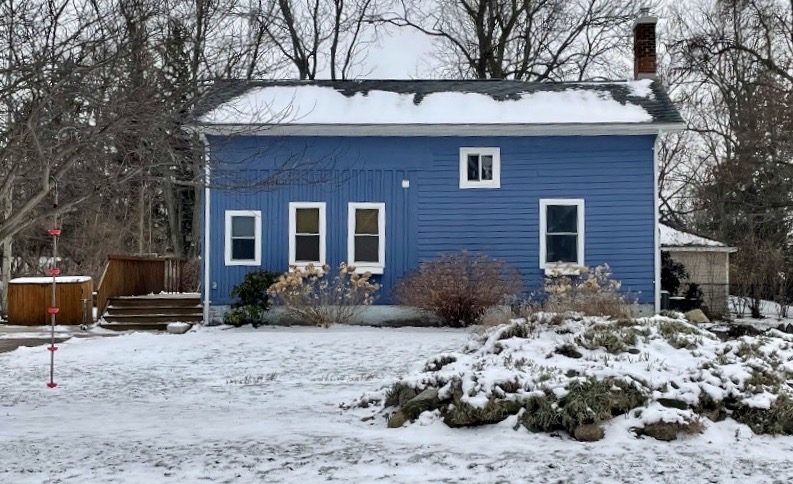
The Arthur Gray house as it looks today.
••••••••
Bicentennial Weekend
Following the monument dedication at the Old Stone Church cemetery I mentioned in our last article, music will be prevalent at Academy Park for the balance of the day. Afternoon bands are being settled now. Local band Reflector will perform in the afternoon, and the evening will end with a concert by The Tower.
There is just one more week before the Chiavetta’s chicken dinner sale on April 30. Get you tickets today, or some will be available on the day of sale at the Lewiston Town Hall.
Remember to keep in touch with the bicentennial website, www.Lewiston200.org, for details and complete schedules.
Thanks to Ken Slaugenhoupt, Tom Collister and Austin Heinz for the article.

••••••••
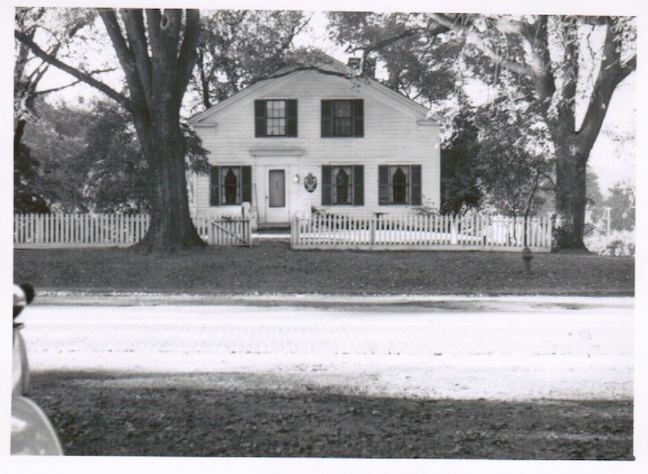
Always in pristine condition, this photo is from the 1950s.
•••••
703 Center St.: Orange Cat Coffee Co.
These articles have given the authors a renewed focus on early life in the Town and Village of Lewiston and, today, we learn of our first non-military medical resources in the entire area. Lewiston is very unique in the scope and importance of its personal history. We hope you are all enjoying the information and appreciating how special this area in which you live is.
Here is a trivia question for you. How many National Register of Historic Sites are in the village? If you want to guess, or just want to know, contact [email protected]. The grand prize is, “Thanks for playing.”
The site of one of the town’s most beloved cafés, at 703 Center St., the Orange Cat Coffee Co., is a building with a unique history in Lewiston. The building was built sometime at or before 1820 and was owned by Willard Smith, the second doctor in Lewiston, in 1825. He came to Lewiston in 1810, joining Dr. Alvord together in one office.
Being a doctor in the early 19th century meant he wasn’t afforded many luxuries that modern-day medical professionals have to aid them. On horseback, he had to cover an area from Batavia to Buffalo, and even extended into parts of Canada across the river. Oftentimes, this meant that there could be no physicians nearby for extended periods of time. Also, on Oct. 13, 1812, the two doctors of Lewiston would treat the wounded in the Battle of Queenston. By 1825, more doctors would be employed in the region, which made it easier for doctors to settle into their region. This most likely gave Smith the impetuous to buy a home of his own in Lewiston.
Another resident of this historic home is Bjarne Klaussen, a Norwegian consul and notable member of the Lewiston community. The various hobbies and jobs he took up successfully marks him as a renaissance man. This can be seen in him becoming president of the company he worked for, becoming a prominent painter in the area, getting silver metals with his father in skiing and sailing, and taking leadership roles in various Lewiston community associations.
A notable talent of Klaussen was his painting ability. He only began painting because he was bored waiting in a hospital and managed to use medical supplies to paint. Klaussen would use this talent to decorate his home and to help the community by painting the historic homes of Lewiston in his straight-forward but edgeless style.
The current site of the Orange Cat was also where a modern-day battle took place in the town. The battle consisted of the citizens fighting against the sale of the property to a gas company. This plan would result into the destruction of the house, so citizens banded together and raised over $16,000, accompanied by a petition of more than 1,000 names, to preserve the house.
This drive would save the building and result in a revived interest in historical Lewiston associations. Furthermore, it would push the local government to emphasize the preservation of historic homes in Lewiston. The house they saved was functional in architecture, but unique moldings around doorways and windows made by journeymen English carpenters creates a unique charm to the building. While the building may be a blip in history, it shows the importance of historic homes to the town and its citizens.
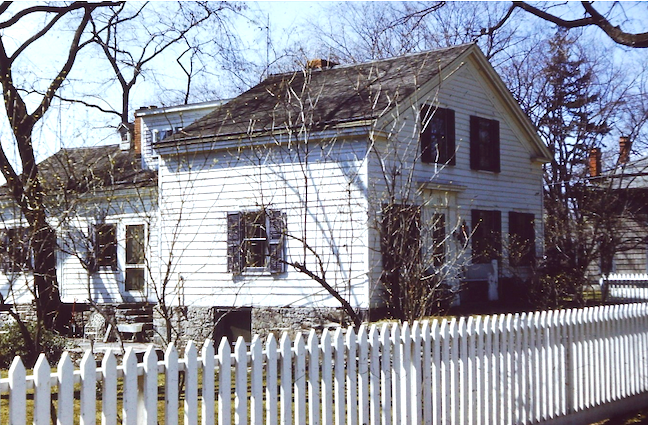
This is a modern but pre-Orange Cat photo of the “Bicentennial Home of the Week.”
••••••••
Bicentennial Weekend
Time is getting short. The committee is feverishly working out details for the four-day event, July 1-4. We are excited about the focus on our mutual history and sincerely hope you will join us for the entire weekend. You can help by reaching out to your personal cadre of former Lewiston residents and making sure they come home for the celebration – which will include a wide variety of music; dedication of the newly expanded and moved Alphonso DiMino Bandshell; a parade; the Potter’s Field Monument dedication; veteran recognitions; food, fun and frolic for the entire four days. The party will end with a Fourth of July fireworks presentation you will talk about for years. See www.Lewiston200.org.
Thanks to Ken Slaugenhoupt, Tom Collister and Austin Heinz for the article.

••••••••
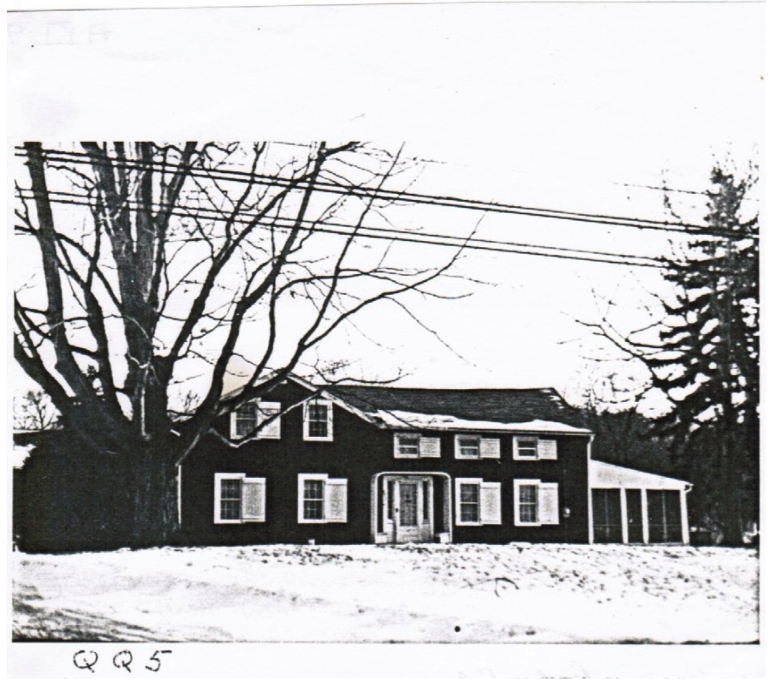
An historic house on an even more historic site: Lemuel Cooke built upon the foundation of an earlier house built and occupied by Joseph Brant, a Mohawk chief.
•••••
832 Ridge Road: Cooke House
At 832 Ridge Road sits a house with history that predates its construction. The first known structure built on this spot was made by Joseph Brant, a Mohawk chief, and his tribe. It was the site of their camp, and later the cabin of Brant.
Englishmen took a liking to him, and Sir William Johnson “pampered” Brant, even sending him to England to get an education.
The tribe was allied with the British during the Revolutionary War, a time when they would, of necessity, vacate their ancestral village to be protected by the British. Their loyalty to the British would gain them a piece of land in Canada, which would eventually be named Brantford, because it was recognized as Brant’s ford.
The home, as it stands today, was built by Capt. Lemuel Cooke, who placed it on top of the Brant home foundation. His father, Isaac, fought in the Revolutionary War under Washington, and Lemuel served as one of the rare army surgeons on the rebel side.
Lemuel Cooke moved to Fort Niagara in 1796 when the government offered a program to provide free transportation to any soldier who would work a year at a frontier fort. Around 1802, Cooke moved to Lewiston, making him one of the first settlers of the area. In the War of 1812, he would provide medical aid to soldiers in his home and later helped soldiers cross the river in the Battle of Queenston Heights. This job was especially fit for him because he operated the ferry house in Lewiston landing.
Afterward, Lemuel Cooke would become a reputable person in the area and a Lewiston judge. In 1820, he would build a respectable house on Ridge Road, where it still stands today.
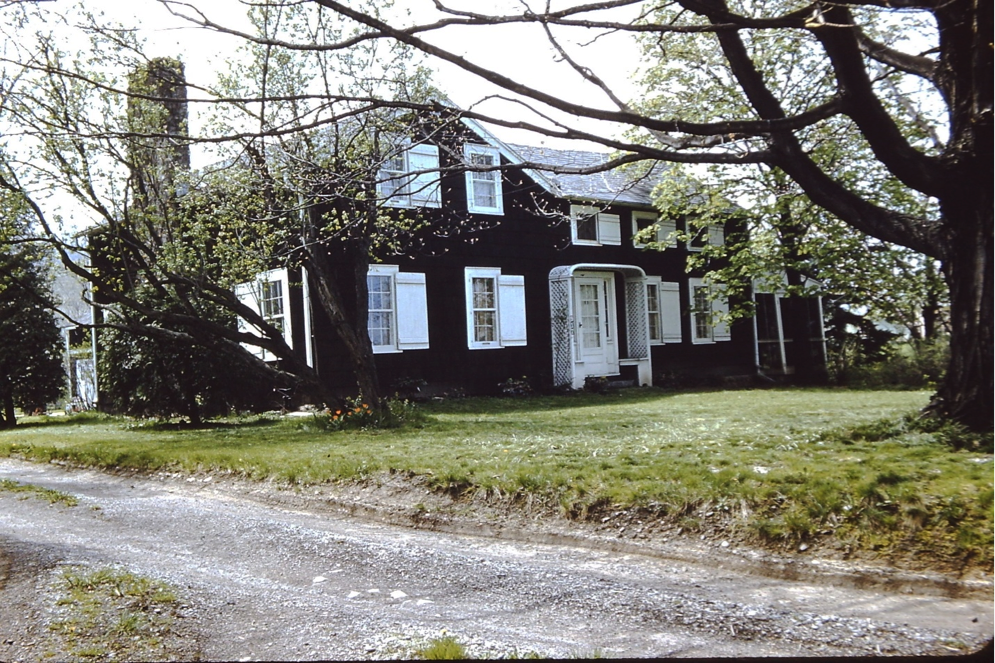
A closer look at the former Cooke House as it looks today. Not far south from this home is the site of the “Brant Spring,” a long-time water source for the Mohawk residents – still referred to in modern real estate records.
••••••••
Bicentennial Weekend
The Lewiston bicentennial celebration is now just weeks away. Visit www.Lewiston200.org for details. Be sure to invite all your former Lewiston friends and family to join us for the four-day celebration of Lewiston’s history.
Thanks to Ken Slaugenhoupt, Tom Collister and Austin Heinz for the article.

••••••••
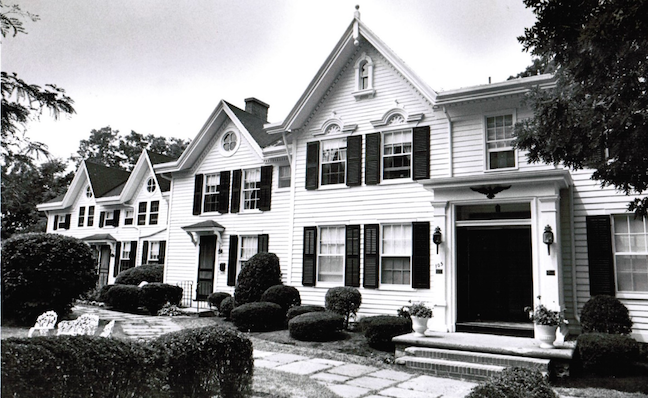
••••••••
105 S. Third St.: Fairbanks Mansion
The mansion on 105 Third St. belonged to one of the earliest settlers of Lewiston, who built the home sometime around 1815. This man is Joshua Fairbanks. He was born Jan. 14, 1768, in Dedham, Massachusetts, and moved to Lewiston in 1805 after creating a successful tavern in Queenston, Canada. It is known that Aaron Burr and his daughter and son-in-law stayed at his tavern on their way to see Niagara Falls around 1805.
He also had a part ownership of a boat that sailed people and goods across the Niagara River to Kingston, which first set sail in 1801. However, this business didn’t last long, as the ship mysteriously vanished one day on a particular stormy night in 1806. The shipwreck was discovered in 2016 – it is the second-oldest confirmed shipwreck in the Great Lakes, and the oldest confirmed commercial ship to have sailed it.
The next noteworthy owner of the home was James Van Cleve, who had an even greater connection to the Great Lakes than Joshua Fairbanks. Van Cleve made his way to Lewiston by becoming an unpaid worker in Amos Tryon’s store at 16. Two years later, a captain offered him a job as a clerk on the Ontario and he was more than happy to leave for a paying job.
The Ontario was the first American steamship on Lake Ontario and the beginning of Van Cleve’s illustrious career on the Great Lakes. After just a few years on the lake, he would become captain of the Martha Ogden, and would spend 51 years of his life captaining various ships.
Outside of the waters, he would make himself a memorable member of Lewiston after marrying Samuel Barton’s daughter, Harriet. She was also the maternal granddaughter of Fairbanks, so she inherited the mansion where both of them would live.
After Van Cleve retired from the waters, he was able to dedicate himself to the arts which he cared much about. Throughout his career. He earned the nickname “Sailor with a Paintbrush,” because he was such a talented artist. His subject of his work was oftentimes ships on the water and landscapes of the Great Lakes or Lewiston region. However, his magnum opus was a book, “Reminiscences of Sailing Vessels and Steam Boats on Lake Ontario.” He created it with the knowledge he had gained from a lifetime of sailing. It detailed the Great Lakes, everything he knew about the ships that sailed them, and had over 100 illustrations all made by Van Cleve. This work has helped contemporary divers find long-lost shipwrecks due to his detailed records.
The house is more than the home of historic individuals, it was a staple of the early Lewiston community. This is seen in the elaborate parties and balls held there in the 19th century and even through “basket parties.” These were dinner parties where affluent women would show up with a basket of food and they would pass it around for everyone to share.
Even in the 20th century, it wasn’t uncommon for the Fairbanks home to have famous individuals staying there: Silent film star Mary Pickford lived there as a child, and it is said the Aaron Burr visited the home. During World War II, the government turned the building into apartments that were under strict rent control.
After the war, the home was quickly deteriorating before Pearl Arlington bought the home and restored it. The home is an attractive sight to anyone who may see it today, because it has original ceilings, floor and marble fireplace mantles to accompany its refurbished exterior.
Bicentennial Weekend
The Lewiston bicentennial celebration is near. Visit www.Lewiston200.org for details. Be sure to invite all your former Lewiston friends and family to join us for the four-day celebration of Lewiston’s history.
Thanks to Ken Slaugenhoupt, Tom Collister and Austin Heinz for the article.

••••••••
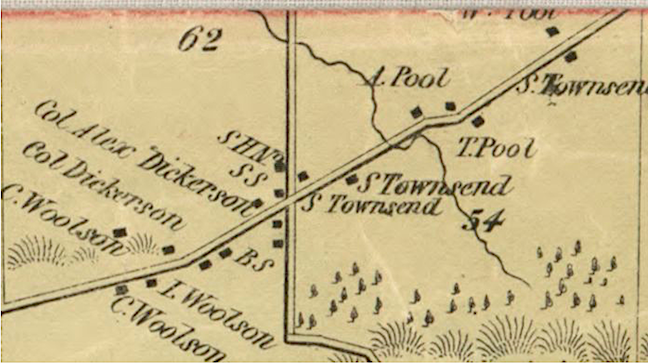
••••••••
As you read this, we are just one month away from the Lewiston bicentennial celebration. Years in the planning, altered by COVID issues (what hasn’t been), but rising over the horizon as we make final preparations. The committee, led by Chair Leandra Collesano, with 13 voting members and a dozen or so other volunteers, is sharpening the focus and tending to the details. We hope you enjoy the homecoming weekend and have a ball.
Today, we look at the 13th bicentennial building as we run up to the grand fireworks.
2147 Ridge Road: Raby Farm
Many of you know the Raby Farm on Ridge Road, but did you know these facts?
The original section of this home was built circa 1819 by Aaron Childs. An account by his son, William Childs, states that his father had rebuilt the home after the British burned the original down. Aaron was one of the first settlers to return after the war to rebuild. While doing so, a band of Indians from Canada came and set the home on fire and left. Aaron rushed in and put the fire out and saved this home. He operated it as a tavern. Aaron was a deacon for the First Presbyterian Church of Lewiston. He and his wife appear as numbers one and two on the church roll.
In 1823, Col. Alexander Dickerson was looking for a place to make his fortune in business on a busier road than River Road in North Tonawanda, where he was alone in the wilderness with little traffic. He found the crossroads of Dickersonville and Ridge Road to be the perfect spot for his dream of making a name for himself. He bought this home and the surrounding 164-acre lot known as lot 62, Township 14, Range 9, of the Holland Land Survey – located on the northeast side of Ridge Road – from Aaron Childs, and continued to operate it as a tavern. It was a prime spot on the Ridge, because it had been cleared and occupied by the Army during the war of 1812. Up to 1,000 soldiers were stationed here off and on during that time, from 1812-15.
In 1962, a farmer planting fruit trees discovered a well about 100 yards behind the house. It was a 30-foot-long, hollowed-out log in the ground with a stone surround at the top. The well was said to be from the army fort.
Also, Ridge Road was the only road into Lewiston at that time. Col. Dickerson became the most famous owner of this property. By 1837, he had bought all the available property in Dickersonville from William Porter. At this time, there was the beginnings of a settlement, complete with a mill, school, store and blacksmith shop. It became known as the Hamlet of Dickersonville. A fine name since the area had been known by several other names, including Hardscrabble, Skunks Misery, Hog Holler, Cattle Town and Onionville.
The home stayed in the Dickerson family until 1867. Since that time, the home has changed ownership several times, and the land of lot 62 surrounding it continues to be an active farm best known as Raby Farm.
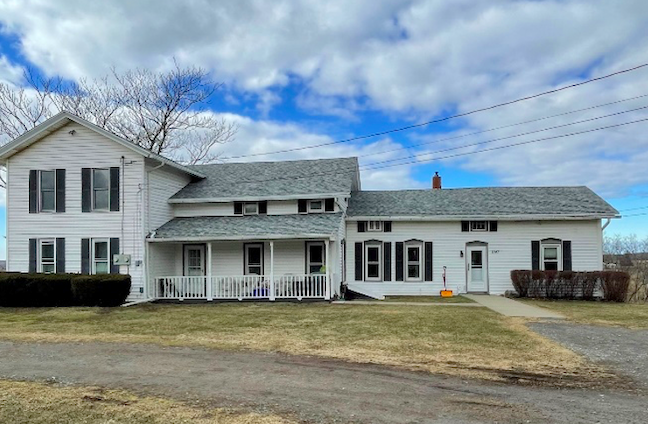
A modern-day look at the Raby Farm site.
••••••••
Bicentennial Weekend
It’s time to plan your Fourth of July weekend. A complete schedule of events for July 1-4 can be found at www.Lewiston200.org.
We continue to offer opportunities for sponsorships at all levels, so find those on the website, as well. A grand 200th red, white and blue weekend is coming soon. Be there.
Thanks to Ken Slaugenhoupt, Tom Collister and Austin Heinz for the article.

••••••••
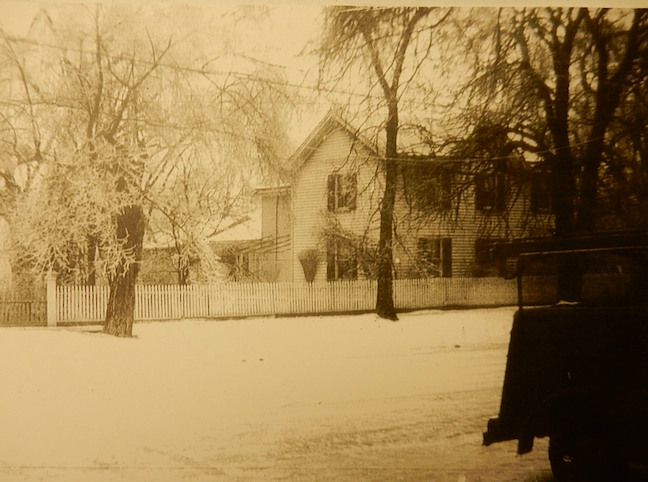
••••••••
715 Cayuga St.: Lothrop Cooke House
First thing this week, let me say I have received many comments about this series of articles and all have been very positive. We at the Historical Association and the bicentennial committee are happy to hear how many people enjoy learning about the most mature buildings in our township. Remember, as old as a 200-year-old structure is, and as much local history they have witnessed, their presence began long after the prehistoric visitation by natives, the appearance of the French and British, and everything else in between.
This edition is the penultimate (next to the last ) [Editor’s note: I do not get much chance to use that great word] of our series involving 15 structures, which were built before the 1822 creation date of the village. The township even predates that.
Now, onto the house at 715 Cayuga St., which was home to one of the most unique characters in Lewiston’s history, Lothrop Cooke. He is the son of Lemuel Cooke, a pioneer of Lewiston, who has his own historic home in the town. Surviving accounts of Lothrop describe him as tall with a powerful demeanor, but cheerful and hospitable when the occasion called for it. This showed in his actions.
When the War of 1812 began, Lothrop needed to escape Canada to avoid being forced to pledge allegiance to the British. He did so by crossing 40 miles of open water in canoe with his wife and small child aboard. During the War of 1812, his father, his siblings, and Lothrop were tasked with making sure soldiers could cross the river safely. Unfortunately, his leg was injured in the cold water and needed to be amputated. However, his attitude did not change with one less leg, and is what earned him the title of first deputy sheriff of Niagara County in 1802, and a Lewiston judge for over 30 years.
Even when he became an undersheriff just a year and a half afterward, he still showed his strength and cunning when a riot of 2,000 men broke out along the canal. Lothrop, with one leg, walked straight up to them and demanded the leader come with him. When they laughed in his face, Lothrop leaped at him and began to beat the leader into submission. This brave feat was characteristic of Lewiston’s most bizarre sheriff.
The house he built in Lewiston was originally on Center Street, but it was moved to 715 Cayuga St., to make room for a plaza in the early ’60s. While the house can’t hold the same energy as the man himself, it is a constant reminder of the vivid and unique history contained within Lewiston.
Bicentennial Weekend
As this issue comes to you on June 11, we are only three weeks away from the celebration. Many last-minute details are falling into place. Be sure to visit www.Lewiston200.org to know everything you need to plan a great weekend celebration.
Thanks to Ken Slaugenhoupt, Tom Collister and Austin Heinz for the article.
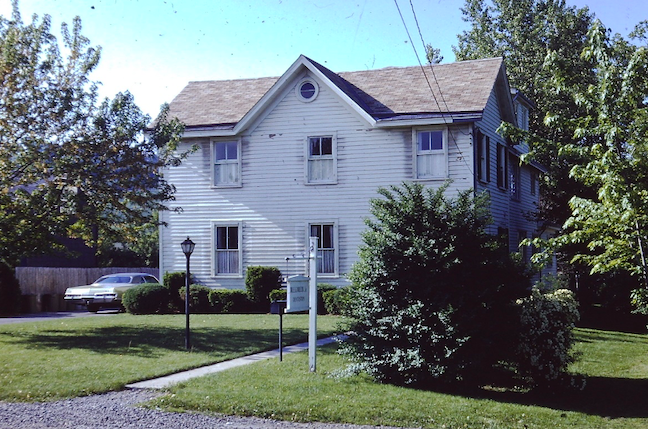
This is the home as it looks today, along Cayuga Street.

••••••••
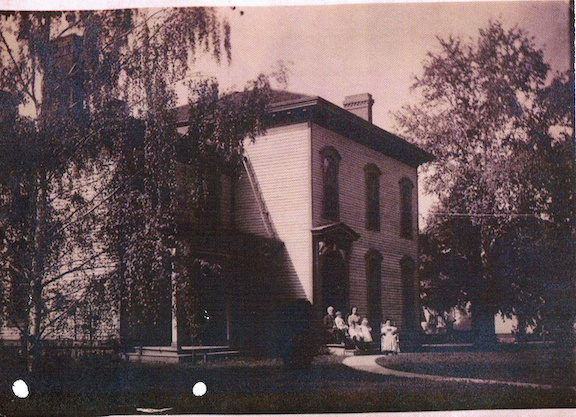
••••••••
Well, I guess it was bound to happen! Writing a series of 15 articles on buildings in excess of 200 years old, we were bound to cause a stir somehow. And we did. In our article on 2147 Ridge Road, we focused on the home sitting on the northwest corner of Ridge Road and Dickersonville Road. In the article, we said it was the northeast corner; that was our first error. The second was we chose to elucidate the location by referring to one of Lewiston’s oldest family-run farms, the Raby Farm.
Harry and Janet Raby received lots of feedback on that and reached out to clear the air – and rightfully so. Although our subject house is surrounded by that farm, it has not been a part of the property for a long, long time; and perhaps more irksome to Harry was he never did live in that house. This is a long-running story for him – clearing the air about never having lived there – but the article caused him to receive many jibes about him being wrong. He was not; he never did live there.
Sorry about that, Harry, and thanks for being such a good sport. I hope the record stands corrected.
Now onto the final installment of our run-up to the bicentennial celebration.
625 Center St.: Kelsey Tavern
The golden age of historical Lewiston came alive from the early-1820s to the late-1830s, when travel through Lewiston was required to get further into the states without hassle. During this period of time, the Kelsey Tavern, on 625 Center St., flourished. Built by Thomas Kelsey around 1820, the tavern was made to accommodate the upper class that visited Lewiston. It had two large ballrooms on the first floor, a second-floor ballroom, and several bedrooms all equipped with their own fireplace.
It is likely that Gen. Lafayette, the famous French military officer who fought in the Revolutionary War, stayed a night at the tavern. He even selected the Kelsey Tavern as the most desirable place to hold a reception.
The tavern was originally square in shape, but this changed when an addition was made in 1866 to the east side of the building.
To add to the myth of this home, when the house was moved back from the street, they discovered a French soldier was buried under the stone floors. Now it is rumored that the ghost haunts the house – and they have even taken to naming it the “Spirit of ’76.” His body still lies there to rest in peace but, when the floor board creaks and strange things happen at night, one wonders if it really is a peaceful sleep.
The building itself has magnificent architecture, which reflects a transition from Federal to Greek Revival, with elements of Italianate and Gothic. The elements that stand out the most are the original staircase with handcrafted black walnut rails and spindles, and a colored glass skylight above it dating to the 19th century. The mantle is ornamented with a pattern of acorns and oak leaves, as well as hand-carved moldings around the doors and windows that are also of particularly high quality.
The antiquity of the house can be seen in the wood work of the older sections, which went through a process that leaves a grain effect and an ochre color. In the cellar, this is particularly clear, because the wood still has remnants of bark and axe marks on it. The high-quality architecture and remnants of its old history combine to create a unique atmosphere in this historic home of Lewiston.
Time Flies …
Well, that brings to a close our review of the town’s and village’s oldest buildings. These were standing in 1822 when the village was formally created as a standalone entity. We sincerely hope you have enjoyed the journey. Many Thanks to Tom Collister, curator of the Lewiston Museum; and to Austin Heinz, our intern, who gathered all of the facts and photos from our often-intimidating historical records.
The time is now nigh! Let’s all band together for four days of remembrance of the people and events that make Lewiston’s history so unique and fascinating. For all the details, refer to www.Lewiston200.org.
See you in the park!
Thanks to Ken Slaugenhoupt, Tom Collister and Austin Heinz for the article.
